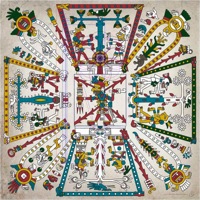Angle
Etymology
Middle English, from Anglo-French, from Latin angulus
- Date: 14th century
Definition
- 1 : a corner whether constituting a projecting part or a partially enclosed space <they sheltered in an angle of the building>
- 2 a : the figure formed by two lines extending from the same point; also : dihedral angle
- b : a measure of an angle or of the amount of turning necessary to bring one line or plane into coincidence with or parallel to another
- 3 a : the precise viewpoint from which something is observed or considered <a camera angle> <consider the question from all angles>; also : the aspect seen from such an angle <discuss all angles of the question>
- b (1) : a special approach, point of attack, or technique for accomplishing an objective <try a new angle> (2) : an often improper or illicit method of obtaining advantage <a salesman always looking for an angle>
- 4 : a sharply divergent course <the road went off at an angle>
- 5 : a position to the side of an opponent in football from which a player may block his opponent more effectively or without penalty —usually used in the phrases get an angle or have an angle
Description
In geometry and trigonometry, an angle (in full, plane angle) is the figure formed by two rays sharing a common endpoint, called the vertex of the angle. The magnitude of the angle is the "amount of rotation" that separates the two rays, and can be measured by considering the length of circular arc swept out when one ray is rotated about the vertex to coincide with the other. Where there is no possibility of confusion, the term "angle" is used interchangeably for both the geometric configuration itself and for its angular magnitude (which is simply a numerical quantity).
The word angle comes from the Latin word angulus, meaning "a corner". The word angulus is a diminutive, of which the primitive form, angus, does not occur in Latin. Cognate words are the Latin angere, meaning "to compress into a bend" or "to strangle", the Greek ἀγκύλος (ankylοs), meaning "crooked, curved," and the English word "ankle." All three are connected with the Proto-Indo-European root *ank-, meaning "to bend" or "bow".
Euclid defines a plane angle as the inclination to each other, in a plane, of two lines which meet each other, and do not lie straight with respect to each other. According to Proclus an angle must be either a quality or a quantity, or a relationship. The first concept was used by Eudemus, who regarded an angle as a deviation from a straight line; the second by Carpus of Antioch, who regarded it as the interval or space between the intersecting lines; Euclid adopted the third concept, although his definitions of right, acute, and obtuse angles are certainly quantitative.[1]
